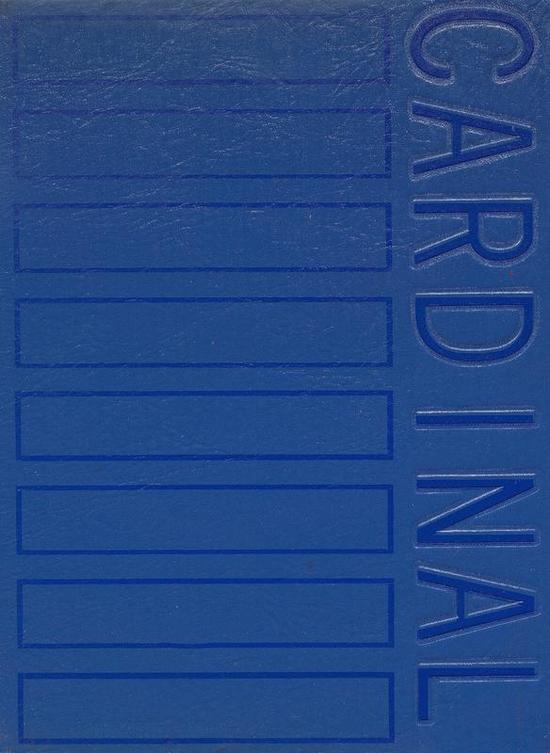Downloads
Full view (pdf: 177.11 MB)
Learn more about copyright and access restrictions for use of materials from Worthington Memory.
Cardinal 1973 is text, with genre yearbook. Its dimensions are 12 in. x 9.25 in.. It is 280 pages long.
It was created in 1973.
Worthington Schools is the Creator. Worthington Libraries is the Contributor. Mary Anderson is the Editor.
The 1973 edition of the Worthington High School Cardinal yearbook features photos of students, faculty, sports, clubs and activities, social events and candid photos. An index of all student and faculty photos begins on page 248. Mary Anderson was the Cardinal editor-in-chief.
The 1972-73 school year would be the last for school superintendent H.C. McCord, who retired in June 1973 after 43 years working for Worthington schools. He joined the school system as a high school teacher in 1930.
Two local issues concerned the Worthington community that year—continued overcrowding of the high school and fears of widespread illegal drug use.
In the November 1972 election, school district voters were asked to choose between building a second high school somewhere on the Worthington High School grounds, or building a second high school somewhere west of the Olentangy River. (Voters had already approved funding for a new high school and improvements to Worthington High School the previous May.) A citizens committee formed to oppose a west-of-the-Olentangy high school. Despite the school board’s preference for a school west of the river, voters approved constructing a second high school on the current high school grounds by 65 percent. The second high school on the existing school site never materialized. A second high school, Worthington Kilbourne, would not open until 1991. It is located west of the river on Hard Road.
The school district re-examined its drug education programs due to concerns that the high school was awash in marijuana, LSD, and “sopors” (depressants whose effects ranged from sleep to unconsciousness, depending upon the dose). Parents attended a school board meeting to allege drug dealing during the school day. Marijuana was portrayed as a “gateway” drug leading to a life of crime and addiction. A popular poster asked, “Why do you think they call it DOPE?” In January 1973 the school district responded with a position paper outlining drug education at all grade levels and recommending separate programs for parents.
Meanwhile, students were permitted to smoke cigarettes in four designated locations outdoors. Until January 1972, students were not allowed to smoke anywhere at school; as a result, illicit smoke breaks in the restrooms had made bathroom access a health hazard.
Title IX of the Educational Amendments Act of 1972 guaranteed equal access for women in academics and athletics. Worthington High School was beginning to take girls’ sports more seriously, even while many high school sports still engaged girls primarily as participants in “pep clubs” to cheer for the boys.
In February 1973, the Natatorium was completed, giving the swim team an indoor pool on school property.
In March, the school board approved the creation of an alternative high school. The Linworth Alternative Program would launch for the 1973-74 school year.
In the spring of 1973, Worthington High School elected its first female student body president. Cindy Evans would take on student council leadership for the 1973-74 school year.
Two new members entered the Worthington High School Hall of Fame: retiring superintendent H.C. McCord and senior Randall S. Vosler.
The 1973 yearbook photos, though only in black and white, still reflect the colorful styles of the early 1970s—notably the pants with wide flares, platform shoes, blazers with wide labels, and tight-fitting T-shirts. Shag haircuts and “wings” were coming into style, and many students, especially girls, wore their hair long and parted in the center. The Poseidon Adventure, Jeremiah Johnson, The Getaway, and Last Tango in Paris were four of the top box office hits during that school year. All in the Family was the most watched TV show.
It covers the topics high schools, school history and students.
It features the people Harold Cromley McCord, 1903-1977, Cindy Evans and Randall (Randy) Scott Vosler.
It features the organization Worthington High School.
It covers the city Worthington.
You can find the original at Old Worthington Library.
This file was reformatted digital in the format video/jpeg2000.
The Worthington Memory identification code is wpl0333_001.
This metadata record was human prepared by Worthington Libraries on June 19, 2019. It was last updated November 17, 2019.

